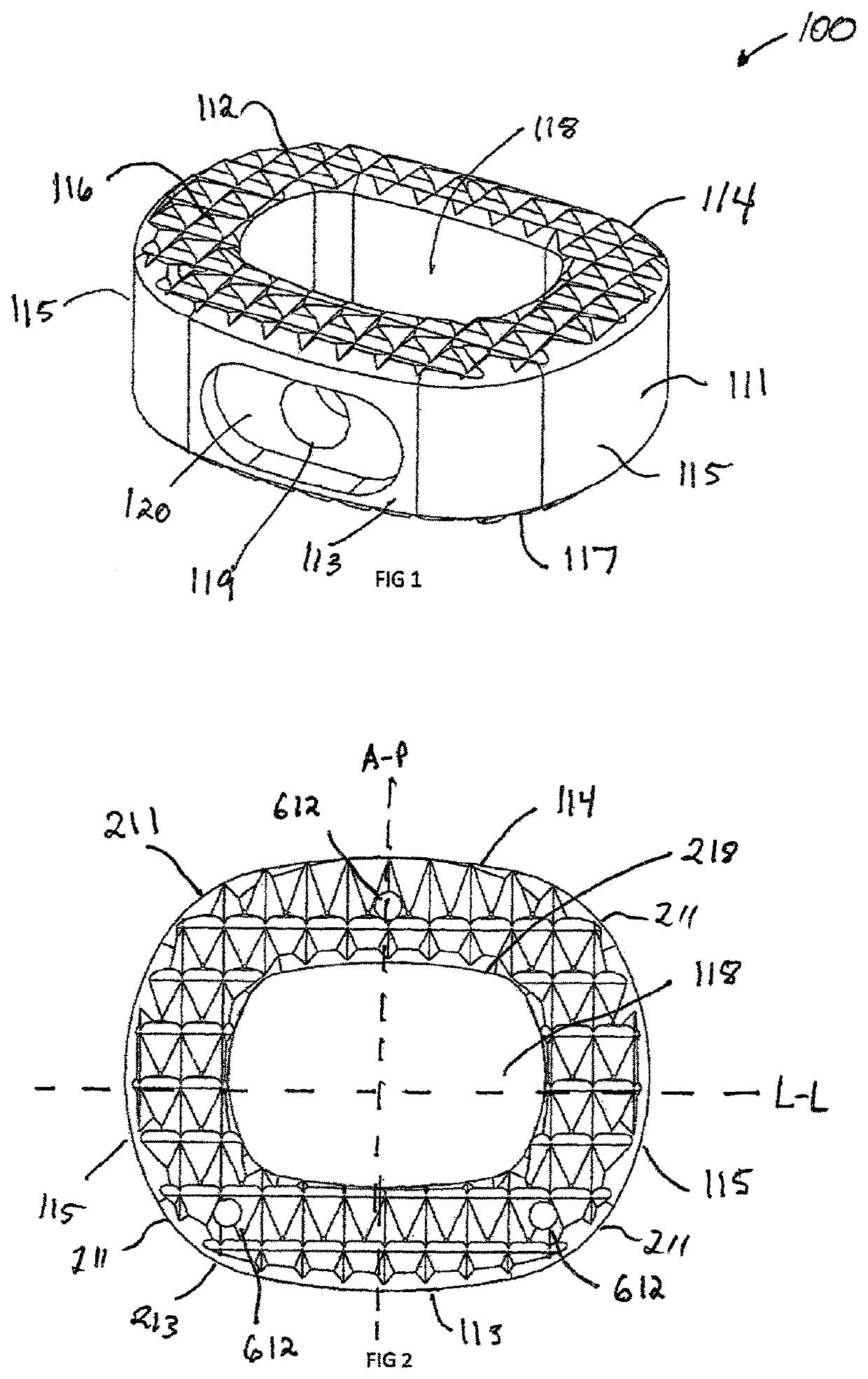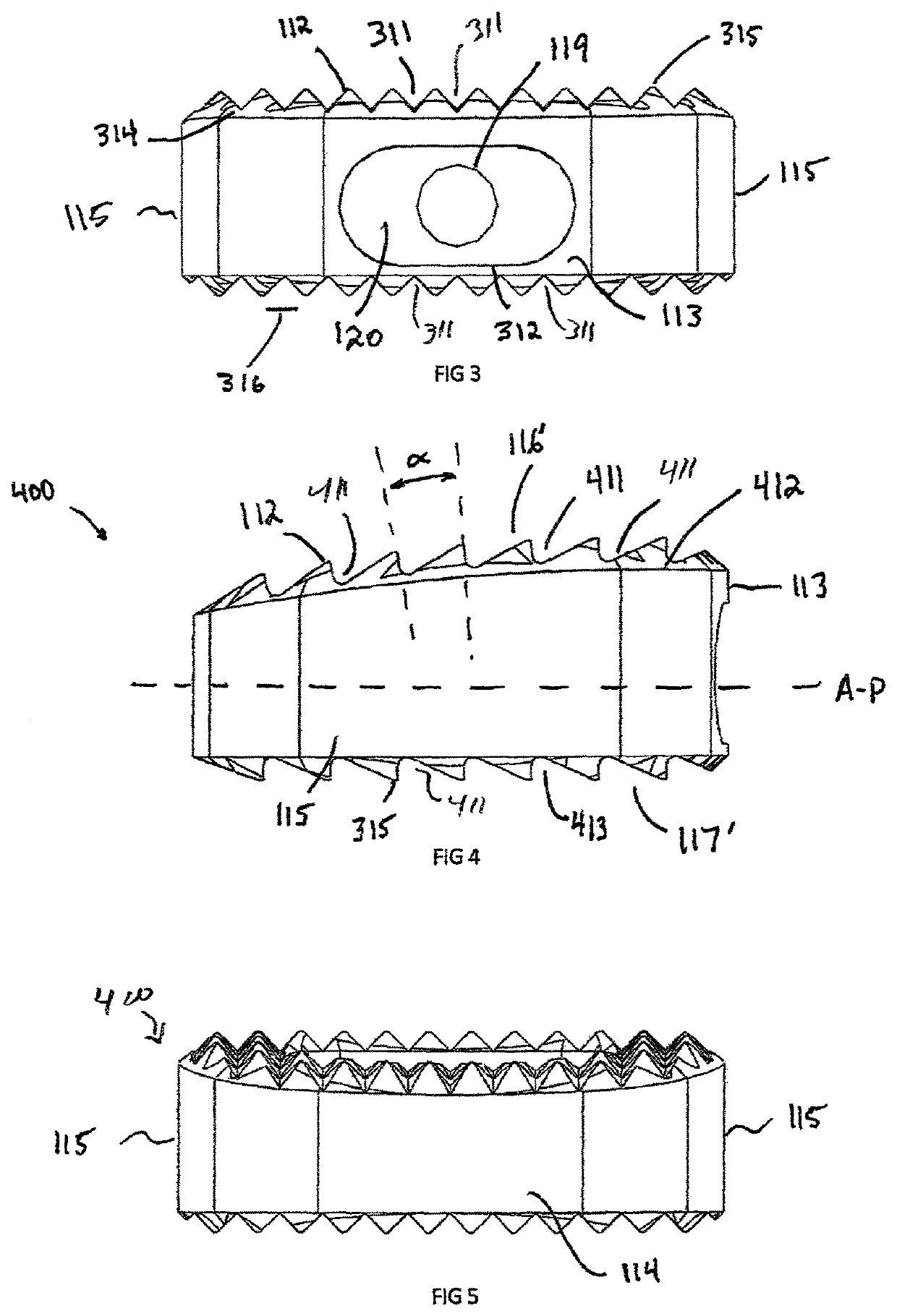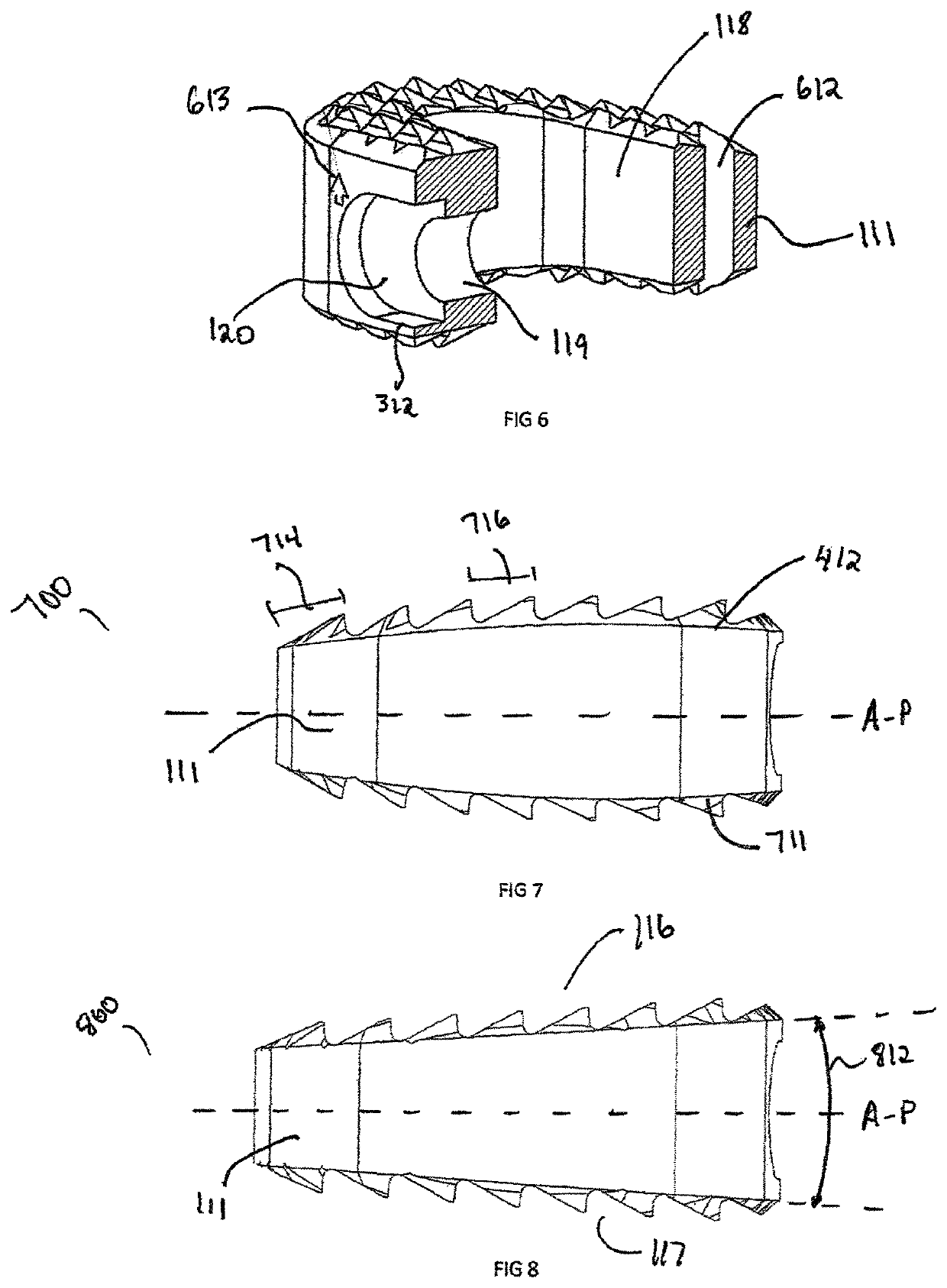Wedge osteotomy device and method of use
a technology of osteotomy and bone marrow, which is applied in the field of bone marrow implants, can solve the problems of high incidence of implant subsidence into the vertebral body, loss of bone correction, and radiolucency of porous titanium implants
- Summary
- Abstract
- Description
- Claims
- Application Information
AI Technical Summary
Benefits of technology
Problems solved by technology
Method used
Image
Examples
Embodiment Construction
[0060]In the drawings, like numerals indicate like elements throughout. Certain terminology is used herein for convenience only and is not to be taken as a limitation on the present invention. For purposes of this description, the terms “anterior”, “posterior”, “superior” and “inferior” describe the position of surfaces or features relative to the anatomy. The term “anterior” refers to features having a relative position toward the front side of a spine, and “posterior” refers to features having a relative position toward the rear side of the spine. The term “superior” refers to features having a relative position above other features, in the cranial direction, and the term “inferior” refers to features having a relative position below other features in a caudal direction. The terminology includes the words specifically mentioned, derivatives thereof and words of similar import.
[0061]The embodiments illustrated below are not intended to be exhaustive or to limit the invention to the...
PUM
| Property | Measurement | Unit |
|---|---|---|
| thickness | aaaaa | aaaaa |
| thickness | aaaaa | aaaaa |
| Young's modulus | aaaaa | aaaaa |
Abstract
Description
Claims
Application Information
 Login to View More
Login to View More - R&D
- Intellectual Property
- Life Sciences
- Materials
- Tech Scout
- Unparalleled Data Quality
- Higher Quality Content
- 60% Fewer Hallucinations
Browse by: Latest US Patents, China's latest patents, Technical Efficacy Thesaurus, Application Domain, Technology Topic, Popular Technical Reports.
© 2025 PatSnap. All rights reserved.Legal|Privacy policy|Modern Slavery Act Transparency Statement|Sitemap|About US| Contact US: help@patsnap.com



